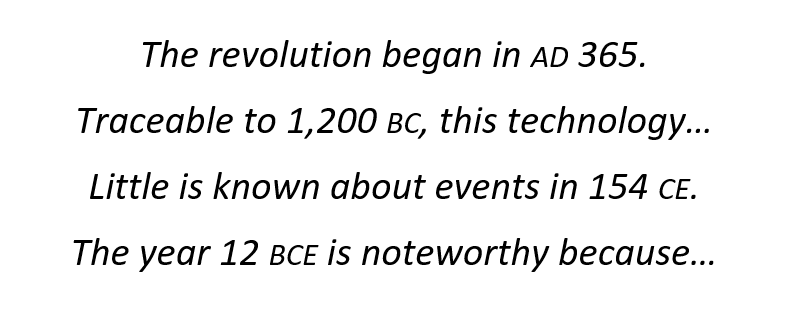
A Quick Guide to Dates in MHRA Style
The Modern Humanities Research Association’s style guide (or MHRA style) is frequently used in the arts and humanities, particularly in the UK. We have covered referencing in MHRA style before, but here we’re going to look at how to present dates in MHRA style.
Read on below to find out what to look for when proofreading a document.
Basic Date Format in MHRA Style
The basic date format in MHRA style is “12 January 1997.” Note that:
- The name of the month is spelled out in full.
- It doesn’t use an ordinal suffix (e.g., 12th, 22nd, 31st) after the date.
- There is no punctuation between the elements.
The only exception is using a comma to separate the day of the week from a date:
The message is dated Friday, 13 October 2011.
However, proofreaders should also pay attention to the client’s country and chosen dialect. MHRA style uses a UK-style date format by default (i.e., day-month-year). But if your client is using American English, they may want to adapt this for a US date format (i.e., month-day-year). And this will mean adding a comma between the date and year:
The message is dated Friday, October 13, 2011.
You should also make sure date formats are used consistently when proofreading.
Date Ranges
MHRA style permits using an en dash to indicate a range of numbers or time span. This can include dates (e.g., 1990–94 or June–August 1966). Alternatively, authors can write out spans using “from” and “to” (e.g., from June to August 1966).
However, MHRA style does not permit mixing these approaches. As such, combining “from” with a dash when writing out a date range will always be incorrect:
The policy applied from 1922 to 1938. ✓
The policy applied from 1922–1938. ✗
If you see this in a document, make a correction based on the context.
Eras and Small Caps (AD, BC, CE, BCE)
Historical writing will often include era abbreviations such as AD, BC, CE, BCE, and AH with dates to clarify the year intended. The rules for using these in MHRA style are:
- Give era abbreviations in small capitals.
- Do not add punctuation between the letters in era abbreviations.
The style guide also sets out rules for positioning these terms:
- When used with a year, AD should come first.
- BC, CE, BCE, and AH should all appear after years.
You can see this difference in the examples below:

However, if discussing centuries, all these abbreviations follow the word “century”:

Keep an eye on how these abbreviations are formatted and positioned.
Decades and Centuries
MHRA style also has a few rules for writing out decades and centuries.
Decades should typically be written as numerals followed by an “s” (but no apostrophe):
The 1920s were a turbulent time.
This was an issue throughout the 1880s.
Centuries, on the other hand, are typically written out in full:
This changed in the nineteenth century.
Fifteenth-century fashion was notable for several reasons.
Note, too, that centuries are hyphenated when used adjectivally.
Approximate Dates
Finally, for approximate dates, MHRA style uses the abbreviation “c.” before the year:
Born c. 673, Bede’s early life…
This is short for “circa,” a Latin term meaning “approximately.”
Becoming A Proofreader
For more advice on everything you need to know to work as a proofreader, from spelling and grammar to different writing styles, sign up for a free trial of our course today.



Leave a Comment
Your email address will not be published.